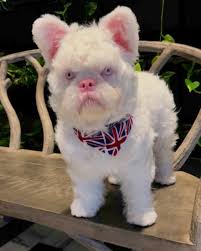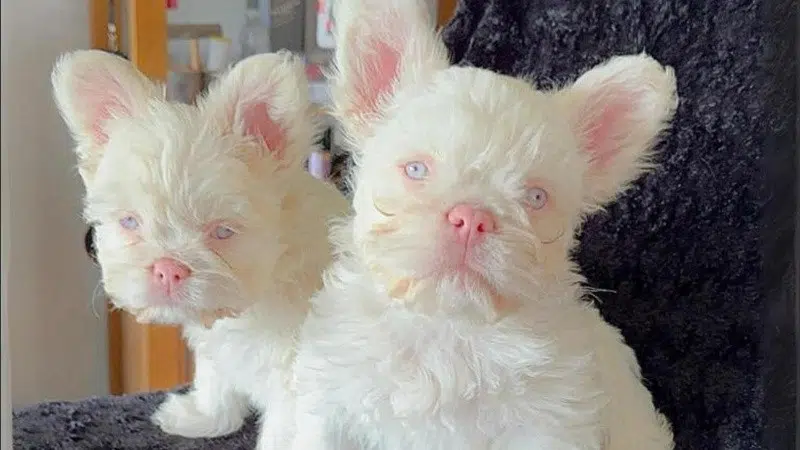The rise of the albino bulldog has become a concerning trend for animal protection organizations and industry professionals. These dogs, which do not belong to any officially recognized breed, are the result of selective crossbreeding designed to achieve a striking appearance, without considering the consequences for the animal’s health.
Their completely white fur and light-colored eyes generate fascination in certain sectors, driving up their demand as exotic specimens. However, this appearance hides a delicate genetic condition: albinism, which goes far beyond an aesthetic characteristic.
Albinism is a hereditary disorder that involves the total or partial absence of melanin, the pigment responsible for color in the skin, hair, and eyes. This deficiency not only alters the external appearance but also exposes animals to serious health problems from a young age.
Albino bulldogs often suffer from blindness, deafness, high sensitivity to sunlight, and skin conditions, adding risks to the respiratory and joint pathologies already affecting traditional varieties of this breed.
 Albino bulldog may suffer health problems due to genetic modification. Photo: Local News.
Albino bulldog may suffer health problems due to genetic modification. Photo: Local News.
Genetics and commerce: a dangerous combination
Despite the known health issues, the breeding of albino bulldogs continues to grow, driven by the pursuit of economic benefits. Many of these animals are sold as unique or luxury specimens, without providing buyers with complete information about their medical needs and the complications they might face.
This phenomenon highlights the lack of regulation in selective breeding and the need for policies that prioritize animal welfare over commercial interests. The animals end up being treated as designer products, disregarding their biological integrity and quality of life.
The risk increases when these specimens are sold without adequate health controls, exposing them to chronic ailments and a cycle of suffering that could be avoided with responsible breeding practices and greater public awareness.
The risks of manipulating genetics in animals
Genetic intervention in species, when not for scientific or medical purposes, can lead to unforeseen and harmful effects. In seeking specific physical characteristics, the likelihood of transmitting hereditary diseases increases or exacerbating pre-existing issues in breeds.
The case of the albino bulldog is a concrete example. Genetic mutations causing albinism also affect fundamental organ systems. The lack of melanin leaves the skin and eyes unprotected from solar radiation, raising the risk of skin cancer and irreversible eye damage.
Moreover, many of the breeds used to obtain these specimens already have a genetically weakened foundation due to years of selective breeding. Further manipulating them in pursuit of “trends” worsens their biological fragility and promotes the spread of health problems.
 Albino bulldog. Photo: rosario3.
Albino bulldog. Photo: rosario3.
The albino bulldog, a dangerous trend
The impact of these practices goes beyond the affected individuals. They contribute to the genetic degradation of species and reinforce the idea that animals can be modified according to market preferences, without considering the ecological and ethical consequences.
The call from organizations and professionals aims to raise awareness about the real risks of these interventions and to promote adoption and responsible breeding, away from fleeting commercial trends that endanger animal health.

